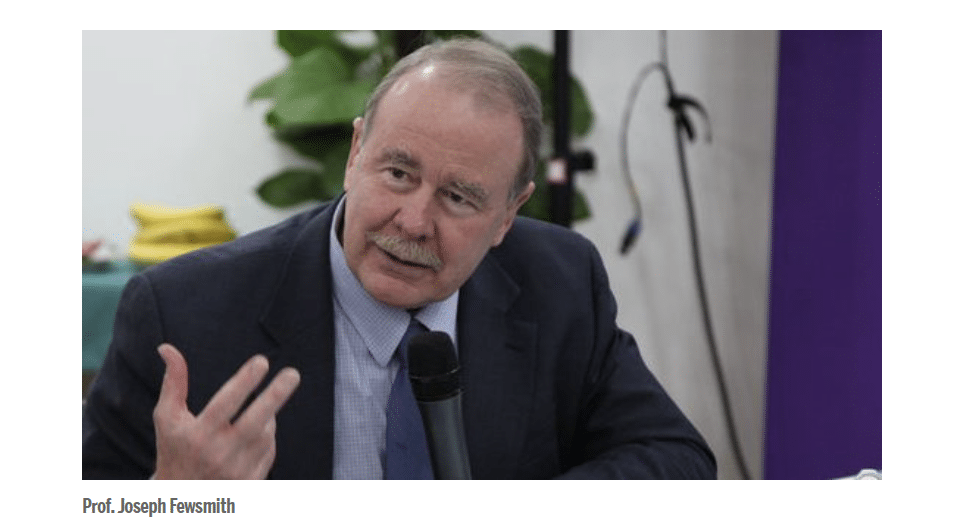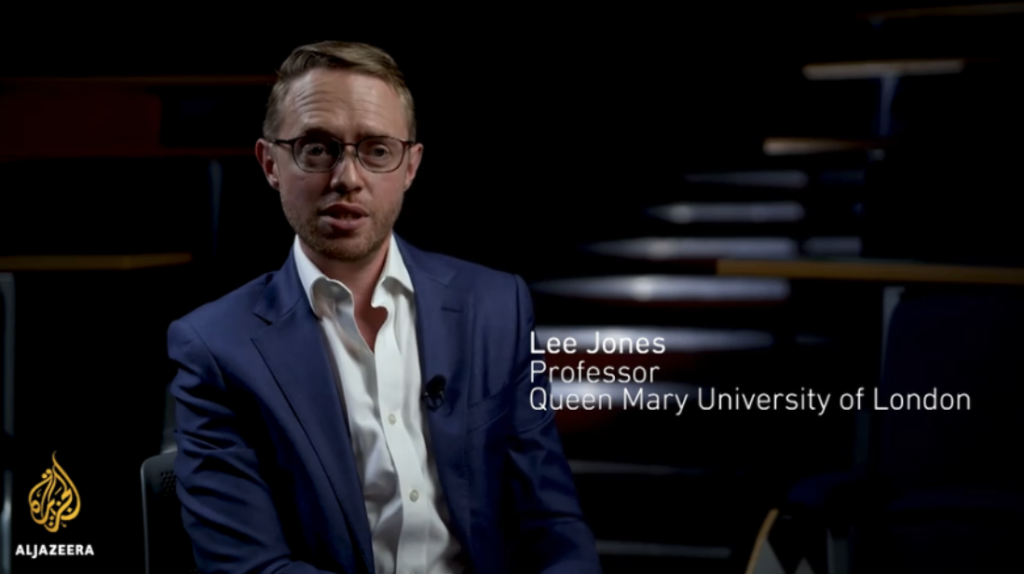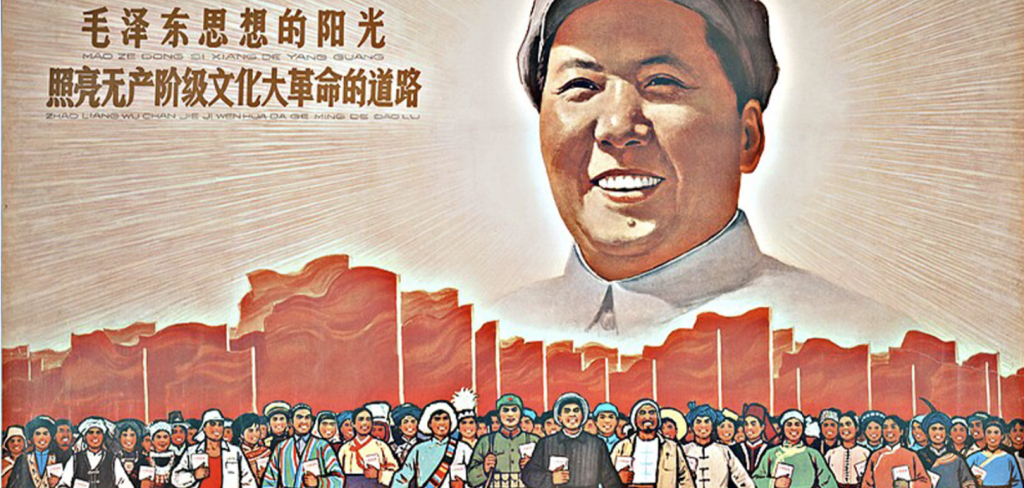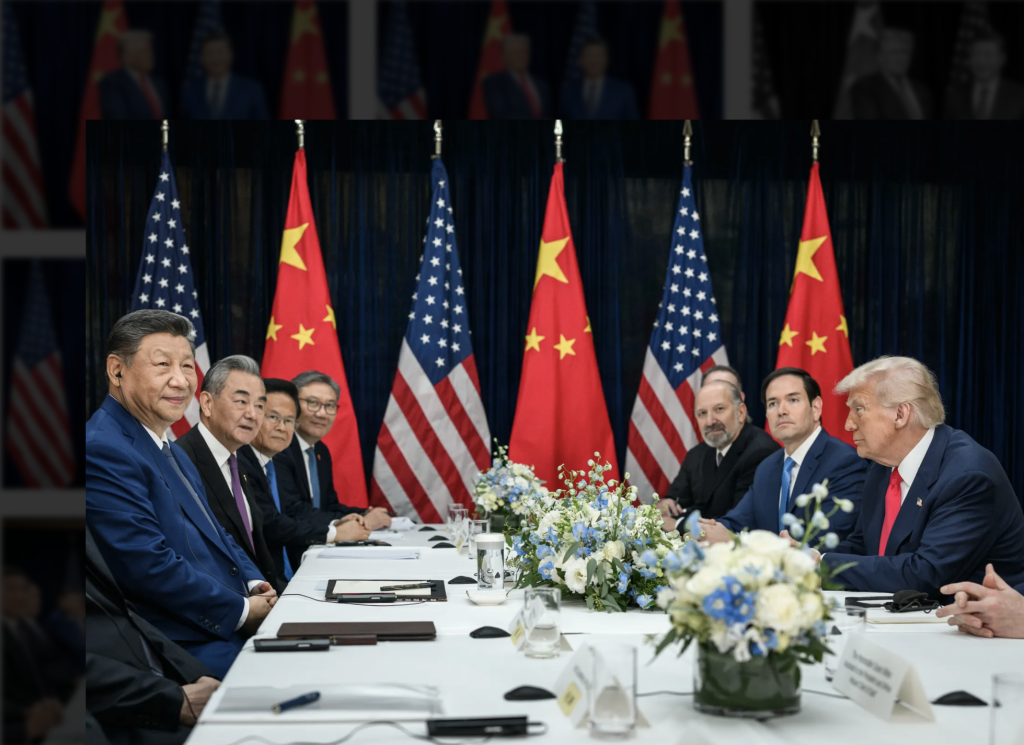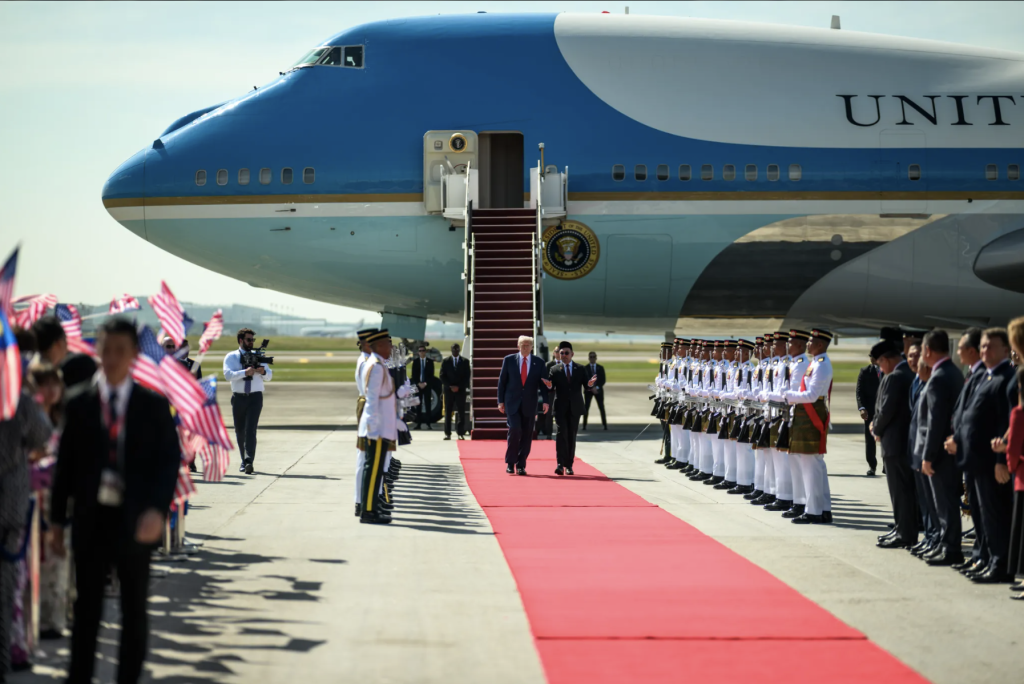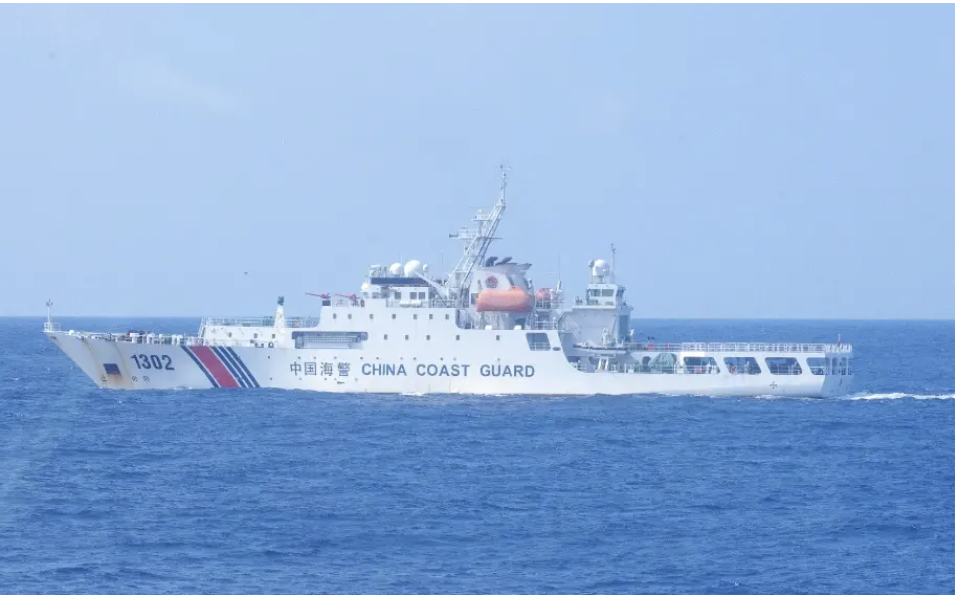Remembering Joseph Fewsmith: The Passing of a Generation of China Hands
The Blood and Muscle: The Americans Who Built U.S.-China Relations w/ Terry Lautz
- Interviews
 Miranda Wilson
Miranda Wilson- 12/10/2024
- 0
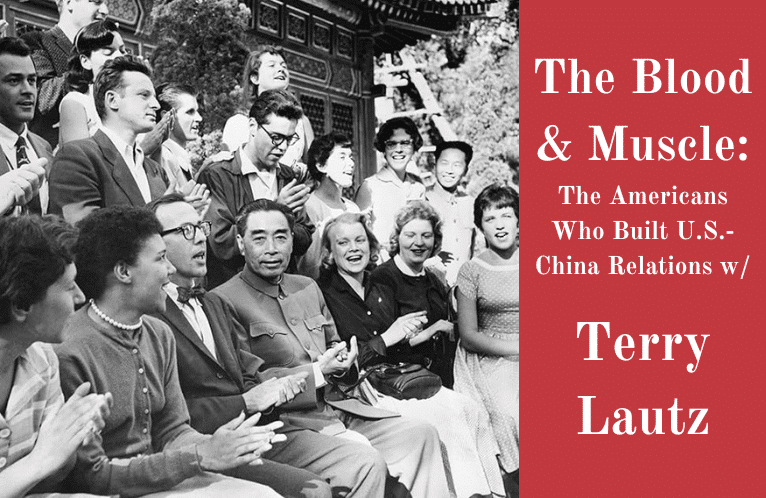
Why do Americans go to China? Dr. Terry Lautz’s book Americans in China paints 13 portraits over 10 chapters of people who traveled to China for a variety of reasons. From missionaries to dairy farmers, Americans from all walks of life have an interest in understanding and exploring China. Some people hope to find a “socialist utopia” and some hope to initiate their own reforms. As Lautz notes, rather than changing China, Americans are often changed by China.
The 13 people Lautz investigates played an important role in what is coined people-to-people diplomacy: the direct interaction and exchange of individuals from different countries or cultures. While these people might not always be the ones deciding policy, they do influence the ways Americans and Chinese see each other and maintain the bridge between our two countries. According to Lautz, people are the “blood and muscle” of the U.S.-China relationship.
In this interview, Lautz talks with The Monitor about his interest in China, characters from Americans in China, and also the unique role of Chinese Americans in the bilateral relationship. Lautz is a Fellow at Johns Hopkins School of Advanced International Studies (SAIS). After retiring from the Luce Foundation as vice president and secretary, he taught and directed the East Asia Program at Syracuse University. Dr. Lautz has served as board chair of the Harvard-Yenching Institute, Lingnan Foundation, and Yale-China Association. He holds degrees from Harvard College and Stanford University.
Miranda Wilson: To start, how did you first become interested in studying China?
Terry Lautz: I lived in Taiwan when I was in high school for two years. My dad was in the U.S. military, and at that time the People’s Republic of China, which we called “Red China,” was off-limits to Americans. You couldn’t go there. You could only go to the border in Hong Kong and look across. There was minimal incentive to study China, but I was curious because of my experience in Taiwan. Everybody said, “Well, that’s really interesting, Terry, but what will you do?” There were very few jobs. But then, after U.S.-China relations opened up during the 1970s, I got lucky and had a series of very interesting jobs. I worked with The Asia Society, The Yale-China Association, and I spent the bulk of my career in New York with the Henry Luce Foundation.
MW: Your book, Americans in China, has a unique format. It includes a series of biographical portraits of American men and women who have lived and worked in China. What are the benefits of thinking about U.S.-China relations in this way?
TL: I wrote the book to show that people make a difference, and that history is more than a series of just dates and facts. The majority of public attention when we talk about U.S.-China relations is on policy issues like trade, technology, and Taiwan, but it’s people at different levels of society that animate the relationship. People are the nervous system, the blood and muscle, and policy issues are the skeleton. It’s people in different professions and different levels of society who shape the way that policies are implemented. Their lived experiences breathe life into the relationship. A lot gets written about one category of persons: the top leaders. We’re constantly reading about Xi Jinping or other government leaders, but it’s important to look at actors who are operating at other levels of society and see what they’ve accomplished.
MW: Your book includes individuals with both positive and negative perceptions of China. While you were writing it, did you come across any surprising similarities between these two types of people?
TL: Some positive, some negative and some more neutral I guess you might say, but all of them admire the Chinese people. Where they differ dramatically is in their reactions to the Chinese Communist revolution. The individuals in my book had very different motives, perceptions, and expectations about Communist China. Some of them were seeking a socialist utopia, others were just curious about China. Some of them wanted—and this is a longstanding American impulse—to change China. However, all of them were changed by China.
In the end, it’s like the blind men and the elephant story. Everybody’s touching a different part of the animal, but they come to completely different conclusions about what it really is. Those who were expecting to find a people’s paradise had unrealistic expectations and were disillusioned when they learned about disasters like the Great Leap Forward or the Cultural Revolution. If you grew up in China, as did some of the characters in the book, you were less likely to romanticize or demonize China or look at China as completely positive or negative.
The first chapter is about a former congressman, Walter Judd, a medical missionary who spent a total of 10 years in China. He had some encounters with the Chinese Communists before they took power and became convinced that Communism was wrong for China and for the Chinese people. He was one of the most outspoken politicians during the Cold War. The irony is that in many ways, we’ve come full circle. What seemed like extreme anti-Communist rhetoric from people like Walter Judd now seems very current. His language is very similar to the political rhetoric we hear from Washington today.
In contrast with Walter Judd, we have the case of Joan Hinton and Sid Engst, a couple who spent their lives as dairy farmers in China. They went there out of curiosity; they were not ideological to start with, but they were won over by the Chinese Communists. Early on, before some of the Maoist disasters, they saw vast improvements in the lives of average Chinese people, especially women. They became true believers and stayed faithful to Mao for the rest of their lives.
MW: Do you think there’s something to be said about the fact that China attracts so many different kinds of Americans?
TL: We as Americans have always been fascinated by China. More missionaries went to China from the United States than anywhere else in the world. About half of them were women. In the late 19th and early 20th century, the only professional options for educated women were as secretaries, school teachers, or nurses. So the idea of China promised adventure, but it was also a kind of religious Peace Corps. At this time, China was very poor and had tremendous social, economic, and political problems. In many ways, Americans were helpful. They established hospitals and schools. They were also evangelists, and that was a double-edged sword. Some Chinese embraced Christianity, and others rejected it. Over time, the idea of America as a model for progress took hold, particularly as a model for education. Even to this day, many Chinese see America as the gold standard for higher education. Despite the fact that official U.S.-China relations are in a very bad state, there are still hundreds of thousands of Chinese students coming to the United States.
MW: It’s interesting to hear about the large number of missionaries. When I was in Beijing, I visited two Catholic churches. One of the churches had traditional stained glass displays with stories from the Bible, but they had integrated important historical Chinese figures into the stained glass. There were other ways the two cultures had been merged. It was very interesting to see.
TL: Yes, and when the missionaries were kicked out of China after the Communists took over in 1949, a lot of people thought that was the end of Christianity in China. What most Americans didn’t realize was that Chinese Christianity, as you point out in your example, had become an indigenous religion. It had become Chinese Christianity. It went underground and could not be practiced for many years. But when the reforms were introduced in the 1980s, religion was once again more permissible. Today, it’s become somewhat more difficult, especially for anyone who is a Muslim in the western province of Xinjiang.
MW: I am most drawn to Chapter 9: the story of John Kamm, a businessman turned human rights advocate in China. How did he navigate the complex political environment of human rights advocacy in China?
TL: John Kamm’s approach was not to lecture Chinese officials about human rights abuses. His method was to try to find common ground through the process of dialogue. The NGO that he eventually established is called the Dui Hua对话Foundation, meaning “dialogue.” He also took a different approach by focusing on individual cases of political prisoners. He aimed to reduce the sentences or to obtain the release of Chinese political prisoners. Some of those prisoners have been U.S. citizens.
Kamm had a hand in the release of the three American citizens who were part of a prisoner exchange with the PRC in late November. He is extremely persistent and has enormous determination. He also does his homework. If he’s meeting with Chinese officials, he knows the details of a case and is able to cite Chinese law and regulations. The Chinese were receptive to this approach, particularly when it was in China’s best interest to either release or reduce the sentences of prisoners. He readily admits that his work has become a lot more difficult in recent years because of the deterioration in U.S.-China relations, but he simply will not give up.
MW: We have a lot to learn from him and the work he’s doing.
TL: John really is quite inspirational. His motivation was because of a deeply emotional response to the Tiananmen Square massacre in 1989. That shook up a lot of people, both in China and the United States. Chinese could not believe that the People’s Liberation Army would be used against its own people. Americans were also horrified. Tiananmen influenced the lives and the thinking of many people. Human rights were a priority for President Carter during the late 1970s, but it didn’t rise to be a front-burner issue in U.S.-China relations until after June 4th, 1989. That’s when the American public and Congress decided China had been getting a free ride on human rights. Americans needed to stand up and represent their values.
MW: I am also intrigued by the Chinese Americans you discuss in your book. For example, Chen-ning (C.N.) Yang, the Nobel Prize-winning physicist who met with Mao Zedong. Based on the Chinese Americans you spoke with, how did they use their unique identities to work towards improving U.S.-China relations?
TL: When I wrote the book, I wanted to be sure to include Chinese Americans. I did that because the role of Chinese Americans in U.S.-China relations deserves a lot more attention. Many of them have been crucial intermediaries, but they have also kept a low profile. There are a couple of reasons for that. Both in the United States and in China they often find themselves caught in the middle. People on both sides ask, “Are you Chinese or are you American?” In addition, some Chinese Americans are reluctant to be public about their opinions because they have relatives in the PRC and don’t want to cause problems for them.
I decided to highlight people from three different generations. C.N. Yang, the famous physicist, left China in the late 1940s to study at the University of Chicago. It was only a few years later that the Communists took over China, and his father said he should not come back. Yang always felt guilty about that decision, not only for leaving his father and other family members, but also because some of his Chinese colleagues who had studied physics in the United States did return to the PRC and they were instrumental in helping China build its atomic bomb. Yang always felt some remorse for not being part of that group, even though he succeeded extremely well and received the Nobel Prize in 1957.
The second Chinese American I wrote about was Shirley Young. She was born in Shanghai, but left as a baby and then lived in the Philippines during World War II. She came to the United States when she was ten years old. Shirley knew very little about China, but she had the cultural skills and cultural background. She went into advertising and ended up in a position to help General Motors (GM) enter the China market, which became very lucrative for GM. After her retirement, she was active in sponsoring cultural exchanges between the United States and China, particularly in dance and music.
The third Chinese American that I wrote about was Melinda Liu, a journalist who was born in Minnesota and was simply curious about China, mainly because both of her parents were born in China and came to the United States for graduate education in the late 1940s. Melinda had an older brother who stayed behind in China because her parents expected that they would come back within a year or two. But they stayed in America and did not see their son (Melinda’s brother) for decades. She opened up the Newsweek bureau in 1980 in Beijing, where she still lives.
During the Trump administration, a program called the China Initiative was launched to identify Chinese spies who were doing research in American universities that would benefit the PRC. This initiative went on for about four years, from 2018 to 2022. It was disbanded because only a few cases were successfully prosecuted. In the process, a number of Chinese researchers at American universities were unfairly accused of spying and wrongfully arrested. This did a great deal of damage to their reputations and their careers, and some of them decided to go back to China. The program was shut down, but there’s a long, long history of anti-Chinese racism in the United States, going back to the late 19th century. This anti-Chinese and anti-Asian racism is yet another reason why some Chinese Americans prefer to keep a low profile, although many are now raising their voices in protest.
MW: U.S.-China relations are at an all-time low. Based on your research and from learning about the stories of the individuals in your book, how did we get here?
TL: I think a lot of it has to do with the longstanding idea that Americans can change China or that Americans know what’s best for China. When China started to open up, introduce reforms, and its economy took off, many Americans convinced themselves that Western-style democracy was inevitable. This transition happened in other societies, including South Korea and Taiwan, and when that did not happen in China, some Americans were not just disappointed but disillusioned. This emotion collided with the fact that the Chinese Communist Party under Xi Jinping has been determined to maintain complete political control. There wasn’t any room for negotiations or maneuvering.
Another reason is the rapid rise of China’s economic and military power. China, under Xi in particular, but even before, has become more aggressive in terms of its trade practices and its behavior toward Taiwan and in the South China Sea. Washington views this as a threat to stability in the Asia Pacific and a danger to the existing world order that the United States has helped to maintain since the end of World War II.
For its part, Beijing sees the continued American presence in East Asia, right in China’s neighborhood, and its alliances with Japan, South Korea, the Philippines, and its military support for Taiwan, as evidence of a policy to encircle and contain the PRC. So, we have a standoff where China is no longer willing to accept the status quo, and the United States doesn’t trust what China believes the future should be.
There is a fundamental disagreement, but I don’t think it’s primarily ideological. It’s about power. Yes, of course, we have different value systems and different ideas of what our societies should look like, particularly when it comes to the issue of human rights, but I think in the final analysis, we don’t have any choice but to strive for competitive coexistence. It’s obvious that we are in competition on many issues, but it’s clear that China and the United States have a number of shared interests, like working together on climate change.
MW: On that note of cooperation, what lessons can be taken from Americans in China for Americans who hope to visit China someday (or return)?
TL: It’s important to remember that people-to-people connections have brought us together. We never had anything nearly as extensive with U.S.-Soviet Union relations during the Cold War. The bridges between China and the United States have been damaged by politics and by the pandemic in recent years, but they have not been dismantled, and the lived experiences have not disappeared. They’re part of our history. This is an important lesson because these stories provide the inspiration to help us to understand the past and to imagine a better relationship in the future.
MW: Finally, could you tell us a little bit about your next book?
TL: The next one is a co-edited volume that’s a counterpart to Americans in China. It’s about twelve Chinese women and men who lived and worked in the PRC and had significant experiences with the United States. The main question is: what difference did this U.S. experience make not only to their lives and Chinese society but also to China-America relations? This new book is called Chinese Encounters with America. Each profile is a different profession including business, civil society, science, sports, music, and American studies. All of them were pioneers in adapting American ideas and methods to Chinese realities. But they didn’t just transplant American methods or American ways of doing things, they reconfigured them. They made use of new ideas for Chinese purposes.
To go back to your question about lessons, this new book is also intended as a counterargument to the idea that engagement on the part of the United States was a terrible mistake because it made China powerful and aggressive. This notion is overly simplistic. There were multiple reasons for China’s transformation, and it’s arrogant to think that Americans were the only ones who were responsible. It was the Chinese people who transformed China.
In the end, we have to realize that this rich and complicated history is not a zero-sum game. There’s still so much to learn and so much to do in order to avoid conflict.
Miranda Wilson is a contributing editor for the U.S.-China Perception Monitor.
The views expressed in this article represent those of the author(s) and not those of The Carter Center.

